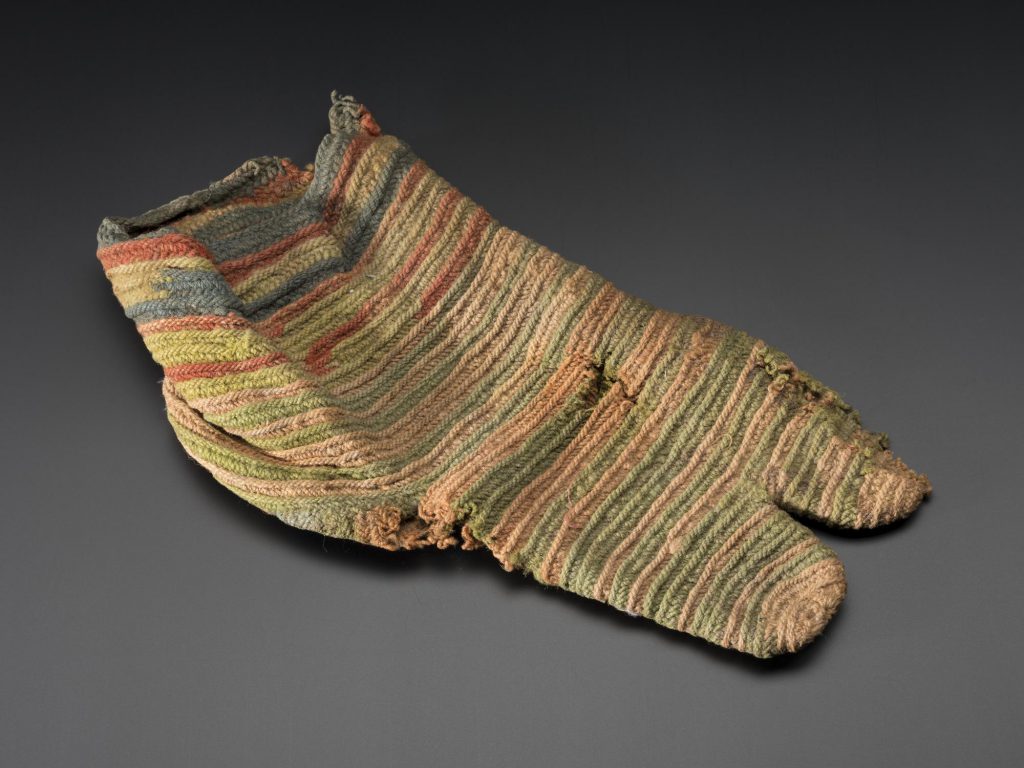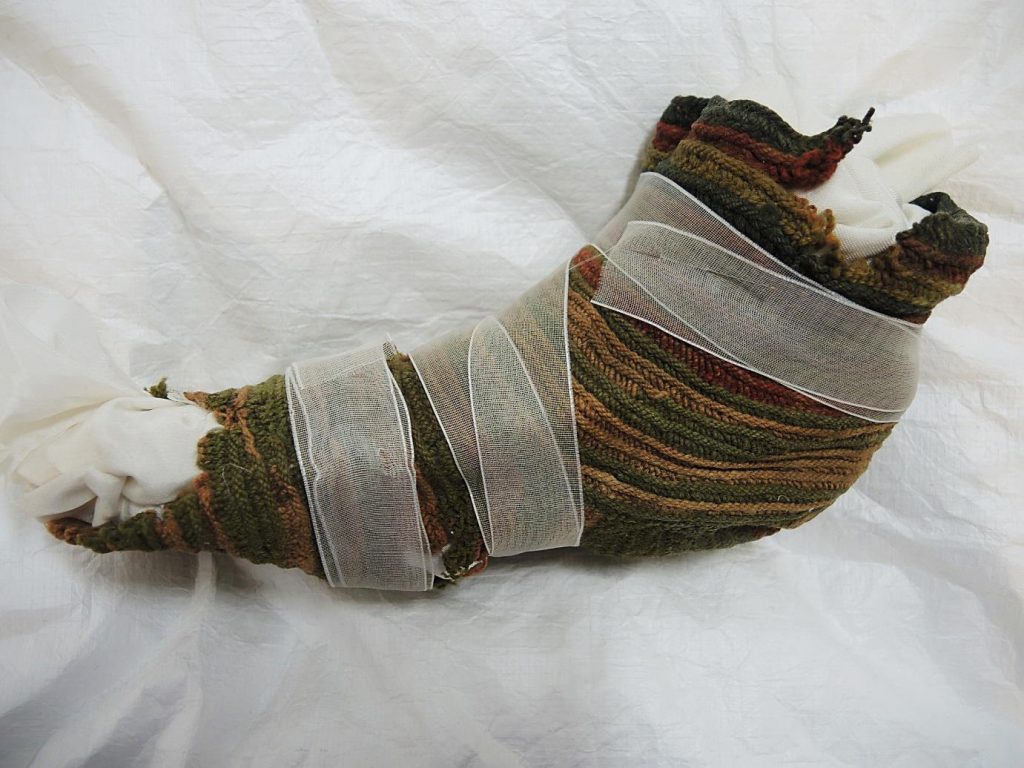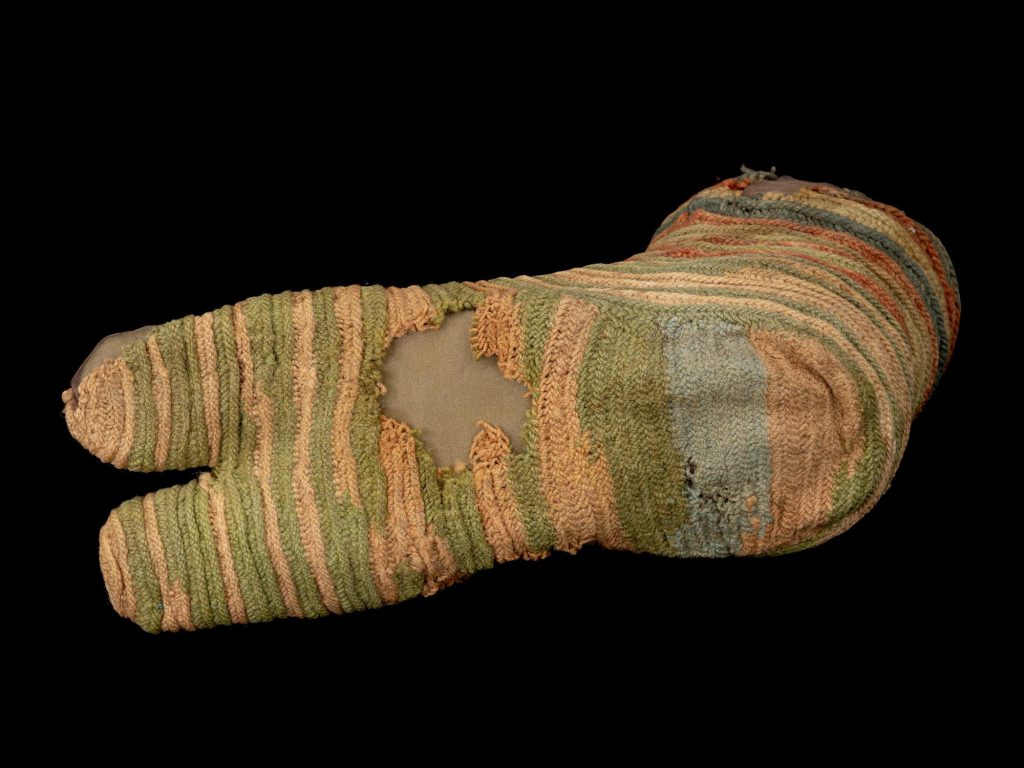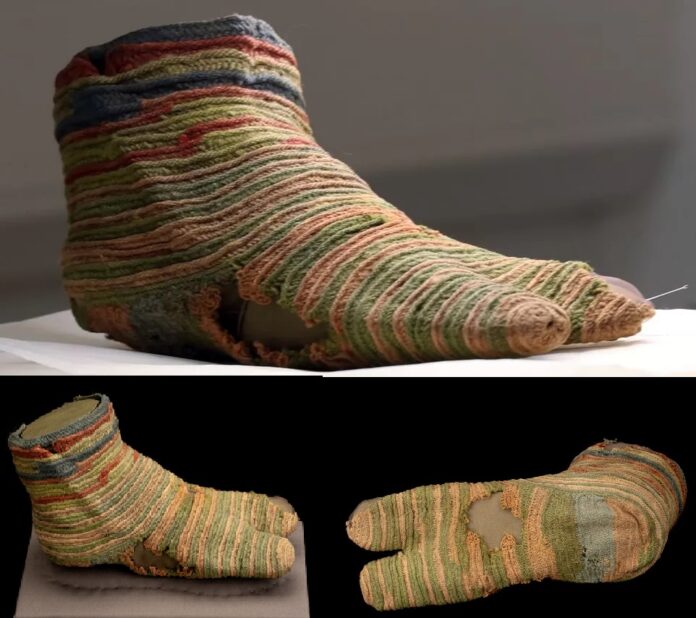In 2019, the National Museums Scotland opened a new Egyptian gallery, showcasing a remarkable collection of artifacts that had long been hidden from public view. Among the many captivating objects on display were several exciting textile items that offered a rare glimpse into the lives of ancient Egyptians. One such treasure was a humble yet intriguing sock, dating back to the 4th-5th century AD.
Uncovering the History of an Ancient Sock

The museum’s register records that this remarkable sock was likely found in Akhmim (ancient Ipu) and acquired by the museum in 1911 from the Egyptian collection of Frederick George Hilton Price, a banker and collector. The sock, composed of four different-colored wools in non-continuous stripes, was most likely excavated from a burial site, providing a tangible connection to the lives of those who lived over 1,500 years ago.
The Remarkable Construction of the Egyptian Sock
The construction of the sock is a testament to the ingenuity of its ancient makers. Employing a knot and loop technique, they created an attractive, well-balanced, and flexible ribbed cloth with distinct twill-type patterning. This design not only allowed the material to stretch and move comfortably over the complex shape of a foot but also retained a surprising degree of flexibility despite its advanced age.
The Divided Toe: A Unique Feature

One of the most notable features of the Egyptian sock is its divided toe. This intentional design may have been intended to accommodate the placement of the big toe in one “sock toe” and the four smaller toes in the other. This unique feature was likely a practical solution for wearing the sock with thonged sandals, a common footwear of the time.
The Nålebinding Technique
The toes of the sock were likely the starting point of the construction process, utilizing a technique known as Nålebinding. This single-needle method, similar to sewing, involves threading yarn through small loops and knotting the stitches. By deduction, the shortish lengths of differently colored wools used in the sock may have been waste products from other textile projects, repurposed into this functional and visually appealing garment.
Conservation and Restoration Efforts

The conservation work on the sock began with a thorough examination and documentation process, allowing the conservators to gain a deep understanding of the object and develop strategies for its preservation. The sock’s poor condition, characterized by dryness, brittleness, and structural instability, posed significant challenges. However, through a careful humidification process and the creation of customized support mounts, the conservators were able to restore the sock’s shape and stability, ensuring its continued preservation for future generations.
The ancient Egyptian sock, with its intricate construction and personal connection to the lives of those who wore it, serves as a powerful reminder of the enduring legacy of ancient textiles. This humble yet remarkable object offers a window into the past, allowing us to glimpse the lives and craftsmanship of those who lived centuries ago. Through the dedication and expertise of the National Museums Scotland’s conservation team, this remarkable textile treasure has been preserved, ensuring that its story can continue to be shared and appreciated for years to come.
